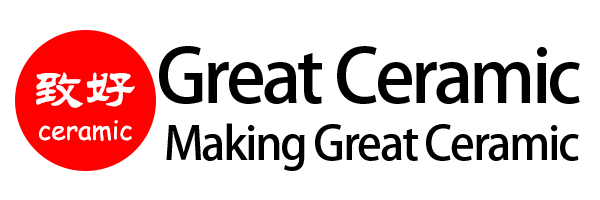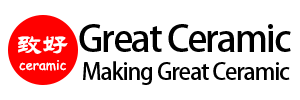Advanced Ceramic Material Properties
Great Ceramic provides a full range of advanced ceramic materials such as oxides, nitrides and carbides, which have excellent mechanical, thermal, electrical and chemical properties and are widely used in high-demand fields such as aerospace, electronics, semiconductors, medical, automotive and energy.
We not only provide materials, but also strive to continuously optimize material design and performance combinations to meet diverse market needs.
This page will systematically outline the basic properties of various commonly used technical ceramic materials and provide detailed material parameter tables to help you make scientific decisions when choosing suitable materials.
Skip to
Mechanical | Thermal | Electrical | Chemical | Applications | FAQs
Mechanical Properties
Mechanical properties define a ceramic's performance under mechanical loads such as compression, tension, and bending. These include ceramic hardness, flexural strength, compressive strength, Young's modulus, and fracture toughness. These are vital for wear-resistant ceramics, ceramic bearings, seals, and high-load structural applications.
Relevant Keywords Explained:
Mechanical performance parameter table
| Material | Hardness (Hv) | Flexural Strength (MPa) | Elastic Modulus (GPa) | Fracture Toughness (MPa·m^1/2) |
| Alumina (99.7%) | ~1800 | 300–400 | 370 | 3.5–4.5 |
| Zirconia (Y-TZP) | ~1200 | 900–1200 | 210 | 8–10 |
| ZTA20 | ~1500 | 500–700 | 300 | 6–7 |
| Silicon Nitride | ~1550 | 800–1000 | 320 | 6–8 |
| Silicon Carbide | ~2500 | 400–550 | 410 | 3.0–4.0 |
| Aluminum Nitride | ~1200 | 300–400 | 320 | 2.5–3.5 |
| Machinable Ceramic | ~500 | 150–200 | 65 | 1.5–2.0 |
| Boron Nitride (h-BN) | ~100 | <100 | 30 | N/A |
| Beryllium Oxide | ~1200 | 250–300 | 300 | 2.5–3.0 |
Thermal Properties
Thermal characteristics are essential in applications involving high temperatures or rapid thermal cycling. Properties such as thermal conductivity, thermal expansion coefficient, and maximum service temperature are critical for heat sinks, high-temperature insulators, and engine components.
Relevant Keywords Explained:
Thermal performance parameter table
| Material | Thermal Conductivity (W/m·K) | Coefficient of Thermal Expansion (10⁻⁶/K) | Max Operating Temp (°C) |
| Alumina | 25–35 | 7.5 | 1500 |
| Zirconia | 2–3 | 10–11 | 1000 |
| ZTA | 12–15 | 8–9 | 1450 |
| Silicon Nitride | 25–30 | 3.2 | 1300 |
| Silicon Carbide | 120–150 | 4.0 | 1600 |
| Aluminum Nitride | 170–200 | 4.5 | 1000 |
| Machinable Ceramic | 1.5 | 9.0 | 800 |
| Boron Nitride | 30–50 | 1.0 | 900 |
| Beryllium Oxide | 250 | 8.0 | 1200 |
Electrical Properties
Electrical properties determine a material's ability to insulate or conduct electricity. Advanced ceramics such as electrical insulating ceramics or dielectric ceramics are widely used in capacitors, insulators, circuit boards, and microwave devices.
Relevant Keywords Explained:
Electrical performance parameter table
| Material | Dielectric Strength (kV/mm) | Dielectric Constant (1MHz) | Volume Resistivity (Ω·cm) |
| Alumina | 10–15 | 9–10 | >10¹⁴ |
| Zirconia | 7–9 | 22–30 | >10¹⁰ |
| ZTA | 9–11 | 15–20 | >10¹² |
| Silicon Nitride | 12 | 8–9 | >10¹⁴ |
| Silicon Carbide | ~5 | 9–10 | ~10⁵–10⁶ (semi-conductive) |
| Aluminum Nitride | 12–15 | 8.5 | >10¹³ |
| Machinable Ceramic | 6–8 | 6 | >10¹² |
| Boron Nitride | 4–5 | 4 | >10¹⁵ |
| Beryllium Oxide | 9–10 | 6.5–7 | >10¹⁴ |
Chemical Resistance
Chemical stability defines how well a material withstands harsh chemical environments. Corrosion-resistant ceramics are ideal for chemical reactors, semiconductor equipment, and medical sterilization systems.
Relevant Keywords Explained:
Chemical resistance comparison table
| Material | Acid Resistance | Alkali Resistance | Oxidation Resistance |
| Alumina | Excellent | Good | Excellent |
| Zirconia | Good | Moderate | Good |
| ZTA | Excellent | Good | Excellent |
| Silicon Nitride | Excellent | Good | Excellent |
| Silicon Carbide | Excellent | Excellent | Excellent |
| Aluminum Nitride | Moderate | Poor | Moderate |
| Machinable Ceramic | Moderate | Poor | Moderate |
| Boron Nitride | Good | Poor | Good (inert to HF) |
| Beryllium Oxide | Good | Moderate | Good |
Applications Based on Property Requirements
Advanced ceramics are widely used across various industries due to their exceptional mechanical strength, thermal stability, electrical insulation, and chemical resistance. This section presents application cases based on different property requirements, helping engineers and product developers select the most suitable ceramic material.
FAQs about Ceramic Material Properties
Advanced ceramics are selected based on performance requirements in specific applications. Below are examples based on the properties explored above:
Let Us Help You Choose the Right Material
At Great Ceramic, we specialize in supplying and machining advanced technical ceramics tailored to your design and performance requirements. Whether you're developing a new product or improving an existing component, our material engineers will help you select the optimal ceramic for your industry.



